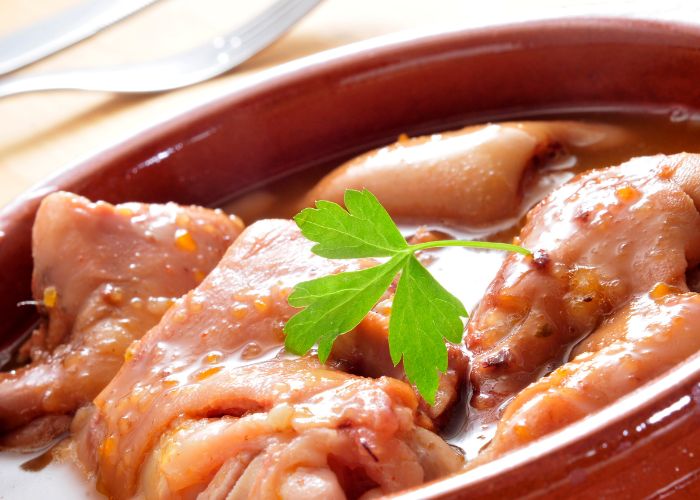MADRID – The delicious and varied cuisine is one of the factors why many people choose Spain. Nevertheless, some more unknown Spanish dishes with unusual ingredients are also served to tourists. In this article, we serve twenty of them for you.
Everyone knows dishes such as paella, gazpacho and common tapas such as tortilla, meatballs in tomato sauce, ensaladilla rusa or grilled green peppers. But can you imagine a stew with pork intestines, grilled cockscombs or fried blood?
You may be horrified, but the use of entrails in gastronomy is a deep-rooted and age-old custom. This is not only in Spain. Moreover, to use every part of the animal and not to waste anything, is also out of respect for the animal.
This custom has both practical and cultural aspects. In the past, Spanish farmers and herders depended on livestock for their livelihood. Eating entrails provided them with a source of nutritious ingredients that would otherwise go to waste. Over the centuries they learned to prepare these animal parts tastefully.
Also read: Tapas districts in Spain you must visit
Avid world travellers are familiar with the phenomenon that residents of other parts of the world have very different eating habits than we do. Although we can hardly imagine it, there are also places on our planet where praying mantis, fried scorpions or even dogs are eaten. Moreover, it is mainly a matter of culture, history and lore.
In this article, we dive into Spanish dishes that are often unknown to Northern Europeans. Please note, however, this item is not recommended for vegetarians.
Buñuelos de sesos – lamb brain dumplings
This dish is typical of the Spanish interior. Although the recipe for the buñuelos dough seems to come from Spain during Moorish rule. The dough, consisting of flour, milk, egg, water and yeast, is baked in the form of balls. Nothing strange in itself. The surprise, however, lies in the filling. It consists of lamb brains…
Callos a la Madrileña – stew of organ and residual meat
Along with the typical Madrid stew, this is one of the main dishes of Madrid’s regional cuisine. Callos a la Madrileña is prepared with organs and other residual meat such as intestines, noses and feet of pigs, cows and lambs. This dish is traditionally served in a small clay casserole dish. The taste is slightly spicy, but the red sauce on the meat has an intense taste. The texture is hard but gelatinous at the same time.
Lamprea – vampire fish
This is a Galician dish from the province of Pontevedra. The lamprey, lamprey or nine-eye is caught in rivers and estuaries, such as the mouth of the river Miño in Galicia. The ‘vampire fish’ gets its nickname from the large number of teeth. They are born and die in freshwater but live in the Atlantic Ocean. The dish was extremely popular in Roman times. Now it is an expensive delicacy because it is very scarce and difficult to obtain. The flesh has a delicate, soft texture and a characteristic taste somewhat similar to liver or caviar.
Rabo de Toro – bull’s tail stew
This dish is typical of Andalucia. The stew is prepared with the tail of a bull or adult bovine and not with the genitals, as many people believe. See a bit later in this article. Rabo de toro was already eaten in Roman times and is linked to bullfights. After the climax of the fight, they tried to use all the meat of the killed bull. The meat has a delicate flavour and a tender texture.
Calamona Asturiana – pork head skin
The skin of a pig’s head is baked or boiled for this dish and served with onion, chorizo and roasted potatoes. Calamona Asturiana is eaten a lot around the carnival period. It is served whole so that everyone cuts off the piece of the head they most want to eat. This dish is also referred to by one of the following names: caramietsa, cachola, cachucha, and cacheira.
Chanquetes Fritos – young gobies
This forbidden delicacy is widely eaten on the Costa del Sol, in the province of Málaga. They are fried young gobies (Aphia minuta), a fish that can grow up to 7 cm long. It has been illegal to catch glass gobies since 1988, but the dish can still be obtained on the sly.
Caracoles – snails
Snails are not only a delicacy in Spain. They were already eaten in prehistoric times, but the Romans managed to perfect the recipe. In Spain, snails are best eaten inland, especially in the regions of Castilla La Mancha, Castilla y León and the cities around Madrid. Traditionally, people gather in family groups and snails on their ground. They then let the snails clean themselves in an isolation box. Then they are cooked with chorizo and spices.
Entresijos en Gallinejas – lamb intestines
The gallineja is the small intestine of the suckling lamb. An entresijo is the intestinal shell of the lamb, the fan-shaped fold of the peritoneum that attaches the intestines to the back of the abdominal cavity. Entresijos and gallinejas are mainly eaten in the Madrid region. There are few places where they prepare them, you mainly encounter them at the feasts of San Isidro. The frying turns them and gives them their characteristic appearance. While this offal is now seen as a delicacy, it was once different. They were distributed to the hungry at slaughterhouses. That custom evolved and people took them home to prepare and sell them in small stalls.
Manteca Colorá – pork fat spread
This dish is often eaten as a spread for bread in Andalusia and Extremadura. It is pure pork fat that has been coloured red by the addition of pieces of pork and paprika powder. The whole is mixed until it becomes spreadable. Furthermore, oregano, bay leaf, vinegar and sometimes the zest of orange are added. Both the smell and the taste are very intense.
Also read: The history of tapas
Angulas – glass eels
An Angula is the young of the eel or eel. The only young species that can be legally consumed under Spanish law. Angulas are very expensive (sometimes as much as 1,200 euros for a kilo). The best place to eat angula is the Basque Country or Cantabria. These little eels have a salty and exquisite taste. They are prepared in a generous amount of olive oil with thin slices of garlic and strips of dried chilli peppers. Nowadays only the fake variety is served because the glass eels are protected.
Cochinillo de Segovia – roast suckling pig
For many Spaniards, this dish is a real treat. A suckling pig is roasted in a typical wood oven or impaled on a rotating bar and roasted. Apart from the fact that many praise the taste of this dish, it is also served in a special way. The piglet is served on a clay dish on the table, after which it is cut with a white porcelain plate. The board is then smashed on the ground
Oreja de cerdo – pig’s ear
Grilled pork ear is typical of the Madrid region. Garlic, parsley and hot sauce are added. Pork ears are considered a delicacy in Spanish gastronomy due to their unique texture and taste. It requires careful preparation and prolonged cooking to make the ears soft and tender.
Cabecillas de cordero – lamb skulls
Cabecillas de cordero are the skulls of the youngest lambs, cut in half and roasted in the oven with parsley, garlic, vinegar and white wine. It is eaten from the skin, the brain, the brain, the tongue and even the eyes. It is a popular delicacy in Castilla y León and La Rioja.
Morcilla de Burgos – Blood Pudding
Morcilla de Burgos is a dish from the north of Castilla. A lot of pig’s blood, onion, hot spices and rice are cooked and packed in the animal’s intestinal skin. Black pudding is often paired with roasted peppers, bread and red wine.
Manitas de Cerdo guisadas – pork feet
Manitas de Cerdo, literally pig hands, is a stew with a long preparation time. The pig’s feet are first thoroughly cleaned and then boiled in water with herbs and spices. The dish is typical of the Spanish interior and the main ingredient is pig’s feet. Manitas de cerdo is often eaten as a savoury meal on special occasions, at family gatherings or as part of traditional festive meals.
Criadillas de Toro – bull balls
Criadillas de toro are bull testicles sliced and breaded or grilled. It is a delicacy in many parts of northern Spain. The testicles are first carefully cleaned. Then they are boiled or baked to make them soft and tender. Sometimes they are soaked in milk or salt water to reduce strong flavours. Some believe that the dish is a remedy for impotence.
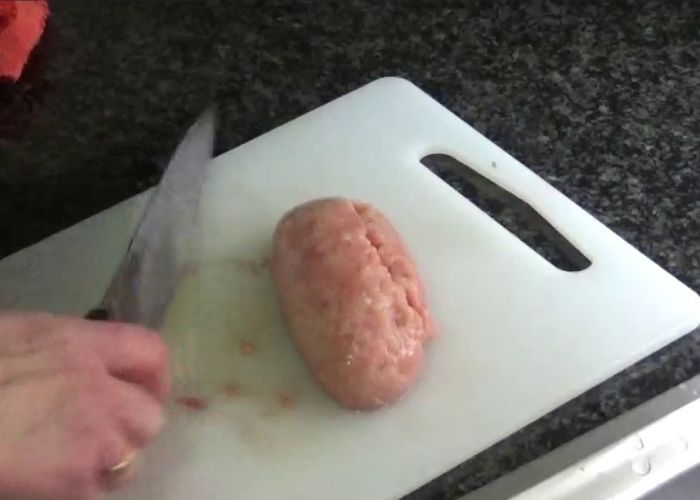
Sangre frita – fried blood
For this dish, a large amount of boiled pig’s blood is fried with onion, garlic, crushed tomato, bay leaf, olive oil, sugar and salt. A good splash of white wine is also added. It is often served as tapas. Sangre frita can be found in traditional Spanish restaurants, but is a particularly popular dish in the regions of Castile and León, La Rioja and parts of Navarre and Aragón.
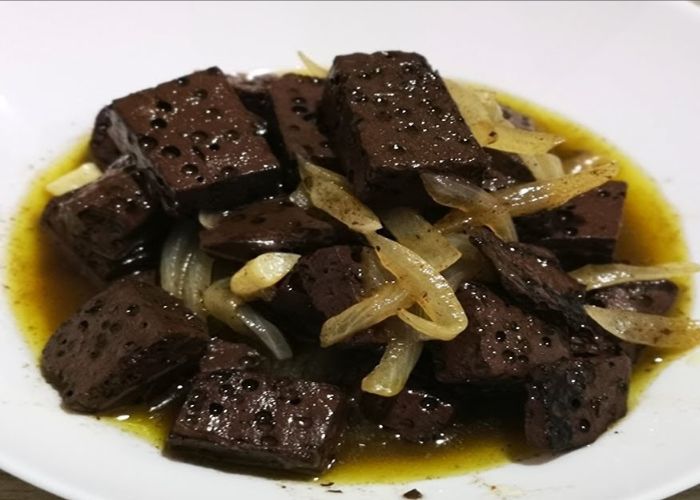
Cresta de gallo – cockscomb
The Cresta de gallo was a delicacy for the Catholic Monarchs, today it is found at a relatively high price in the provinces of Cuenca and Zamora. It’s a tough delicacy to prepare properly. Cockscombs are stewed or prepared as tripe with garlic, paprika, olive oil and salt and are usually accompanied by garlic almonds and ñoras, a dried type of pepper.
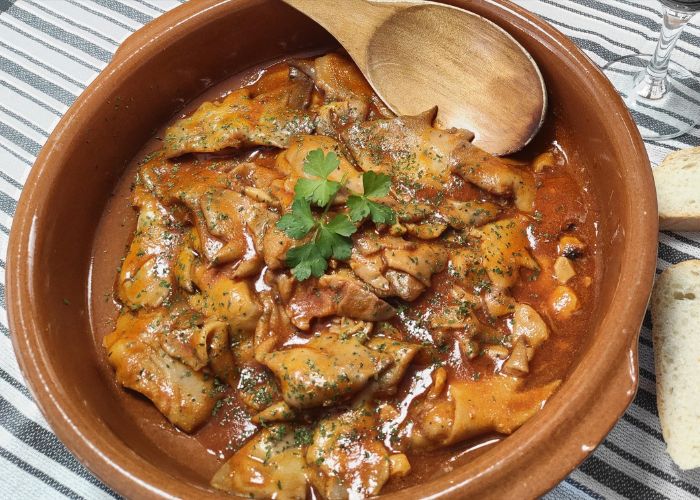
El Morteruelo Manchego – paté
This spread can be found on the menu of many restaurants in Guadalajara, Toledo, Cuenca, Ciudad Real and Albacete. This Spanish dish is usually prepared with pork, but game such as rabbit, pheasant or quail is often added in season. Together with breadcrumbs and spices, the whole is crushed in a mortar (mortero) until the result is a paste that resembles pâté. It is served with bread.
Madejas or Zarajos – lamb intestines
In Navarra, La Rioja and Madrid the dish is called Zarajos, but in Aragón they know it better as madejas. The terms include viscera as gizzard, liver, ears, brain, tongue, snout, kidneys, heart, rumen and intestines among others. The entrails are threaded onto a skewer like a ball of wool wrapped around a stalk of green garlic and marinated with spices. The whole thing is then roasted and served without too much decoration.
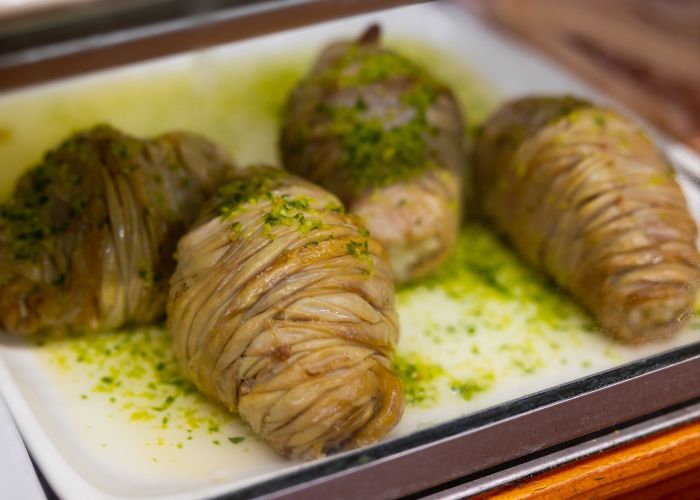
We hope you have enjoyed finding out about some of these more unusual Spanish dishes and have an opportunity to try some.
